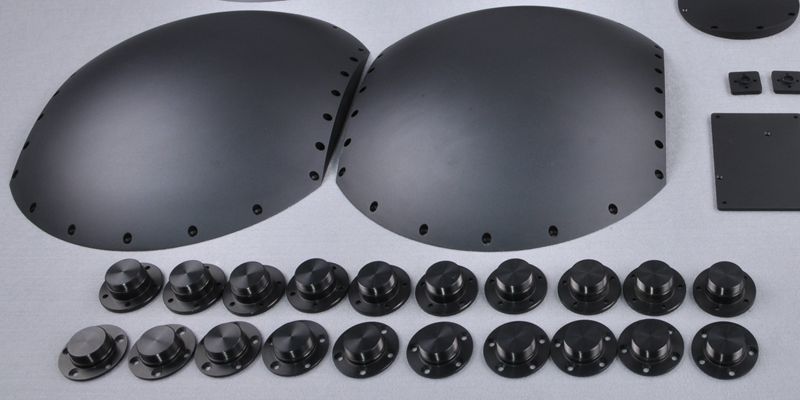- July 12, 2022
Black oxide finish is one of the various surface finishes used in machining. Surface finishes are vital in precision machining because they can increase the lifespan and aesthetics of machined parts. However, one problem many finishes pose is their tendency to increase the dimensions of the finished precise machine parts. This is detrimental to the functionality of these parts, given the need to have accurate dimensions to fit in properly.
But, the black oxide finish stands out compared to other metal surface finishes in this regard. This is because of its ability to bestow the good properties of surface finishes on machined parts with minimal dimension extension. In this article, we’ll explain the black oxide coating process, the types of black oxide finish, their applications, and everything else you need to know about this surface finish.
What is Black Oxide Coating?
The black oxide coating is a type of coating that belongs to the conversion coating category. A conversion coating is a type of coating where a chemical process is used to make the coating. The name ‘black oxide’ originates from the fact that the coating makes the color of any metal surface black/matte.
The black oxide finish process involves dipping machined metal parts into an alkaline solution. The solution then converts the iron on the metal surface into a compound known as magnetite. This magnetite gives a black coating on the metal surface. Metals you can black oxide include stainless steel, powdered metals, copper, silver solder, zinc, etc.
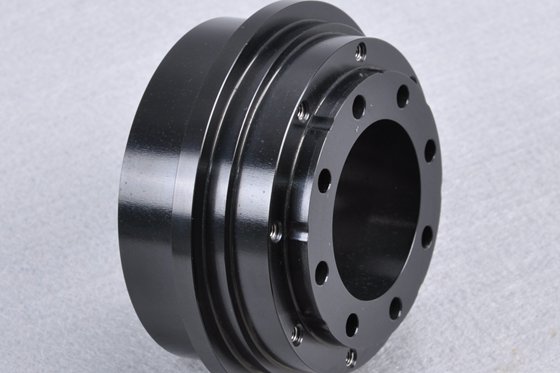
What is the Process of Applying Black Oxide Finish?
The back oxide finish process generally involves five steps which include:
- Cleansing
- Rinsing
- Descaling/Pickling
- Black Oxide Finish
- After Finish
This section will explain each of these steps in detail.
Cleaning
This process involves preparing the part for the black oxide finish coating. The machinists degrease and clean the part using an alkaline solution.
Rinsing
This process involves washing off the alkaline solution used in cleaning with distilled water.
Descaling/Pickling
This stage is only necessary if the parts have rust or scales. It involves removing all the rusts and oxide stains on the finished parts by soaking them in acid.
Neutralizing
This process is only necessary when the finished parts have blind holes, or it is an assembly of parts. This involves rewashing the part with an alkaline solution. This will help prevent bleed-outs which could impair the surface of the part.
De-plating
This conditional stage occurs only when the finished part is plated with another material (e.g., chromium, zinc, cadmium, etc.). The machinist must de-plate the part as the black oxide finish cannot stay on plated parts.
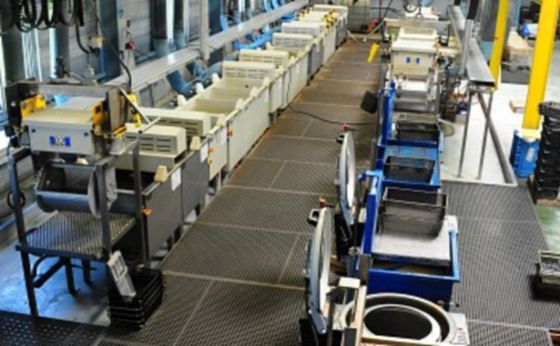
Black Oxide Finish
This is where the machinist finally applies the finish. The machinist dips the finished metal parts into tanks containing various alkaline solutions such as sodium hydroxide, nitrates, and/or nitrates. This stage has three different temperatures, determining the coating material on the part’s surface.
At the hot (141°C) and mild temperatures (90 – 120°C), the process leaves a magnetite coat (Fe2O3) on the part. However, at the cold temperature operating level, the process deposits a copper selenium coat (Cu2Se) on the part surface.
After-Finish
Without the after-finish, the finished part is still highly prone to corrosion. However, this rule does not apply to black oxide stainless steel or brass surface. This is because these metals have inherent anti-corrosion properties. However, for other metal parts, the after-finish is quite vital. The common after-finish candidates are oil, wax, and lacquer.
Oil is the commonly used after-finish among machinists. It gives a glossy surface and also increases the lubrication and corrosion properties. Wax gives a duller surface, but its lubrication and corrosion-augmenting properties are even higher. Lacquer is also a good choice, especially if you need to finish the parts quickly, as it dries very quickly.
Types of Black Oxide Finish
As mentioned earlier, there are various operating temperatures at which machinists carry out the black oxide finish process. These temperatures also different the various types of black oxide finish. They include:
Hot Black Oxide Finish
The hot black finish is the most popular type of black oxide finish. It involves dipping the part in salt baths at high temperatures. The various salt baths used include caustic soda (NaOH), nitrates, and/or nitrites salt baths.
Automated transporters move the parts from one bath to another to fully affect the process. The temperature range of this process is usually around 275°F to 295°F.
It is vital that the temperature of the black oxide coating process stays in this range. This is because lower temperatures elongate the process, while higher temperatures would cause rust on the finished part’s surface.
The combination of the salts and the elevated temperature of the slats causes the formation of magnetite (Fe2O3) instead of rust (another iron compound).
There’s another sparingly used method for applying hot black oxide coating. However, it only works for steel surfaces is the use of iron (III) chloride. The machinist repeatedly dips the steel part into an iron (III) chloride bath and then into a hot water bath.
Mid-temperature Black Oxide
This process is similar to the hot black oxide finish, differing only by the operating temperature. The operating temperature here is around the 194°F and 248°F range. This temperature can also convert the metal to magnetite. However, it has an advantage over the hot black oxide finish because it doesn’t produce caustic fumes during the process.
Cold Black Oxide
Also known as room temperature black oxide, this process doesn’t follow the same method as the other types. This process involves depositing Copper selenide on the metal surface at 68 – 86°F. The result of this process gives a black oxide finish that isn’t as resistant to wear as the others. However, after the addition of the after-finish, it becomes just as good.
Applications of Black Oxide Finish for Precision Machined Projects
Due to the minimal dimension extension, this finish provides for precision machined parts, it is not surprising that it is popular in various industries. Other properties, such as its light-absorbent characteristics, wear resistance, etc., make it a great finish despite its low price point. We’ve compiled a few applications of the black oxide finish in this section:
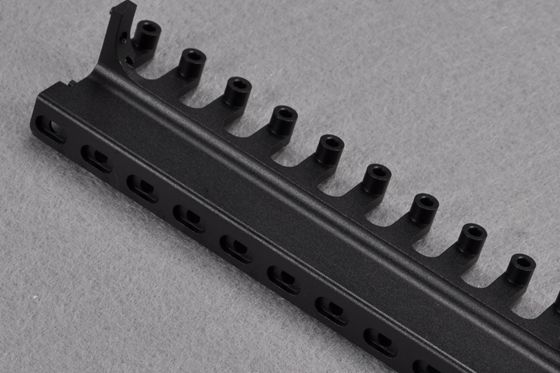
Medical Applications
Due to the light-absorbing properties of parts with a black oxide finish, they can be used for light-sensitive medical instruments such as X-ray machines.
Electrical Parts
Wire strippers, gears for timers, cutters, etc., are examples of electrical components that have black oxide finishes.
Automotive parts
Many automotive parts also use black oxide finishes. You could find them in parts like oil filter cans, suspension bushings, spark plugs, brake valve components, etc.
Military Parts
The mid-temperature black oxide finish is a common finish used for military applications. It is commonly found in the turrets of military humvees, shotgun shell magazines, etc.
Assembly Tools
Precision machine tools used in manufacturing assemblies commonly have black oxide finishes too. Tools like bearings, fasteners, and gauges, are good examples.
Factors to Consider When Using Black Oxide Finish
Before deciding on using the black oxide finish for a precision machined part, there are various parameters that you must consider. These factors will help decide if the black oxide finish will be a good choice for the part. Examples of these factors include:
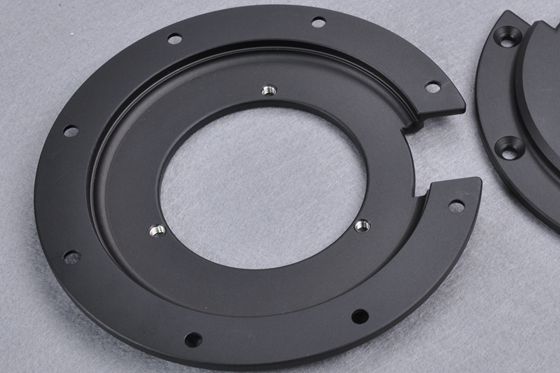
Application of the Part
What industry did you make the parts for? Are they meant for use in light-absorbent environments like the medical industry or abrasion-resistant environments like the military? The application of your precision parts determines if black oxide will be a suitable finish for the machined part.
Location of Use of Part
Where you intend to use the part is also vital when picking black oxide as a finish. Generally, surface finishes tend to have longer life spans when used indoors. The same rule applies to black oxide. Due to its thin layer, outdoor conditions like humidity and continuous high temperatures could cause black oxide to wear off faster.
The Desired Finished Look
The final appearance of a part is also important, especially when the aesthetics of the part is a big deal. After applying the black oxide finish, you can have two final looks: matte or glossy. The type of after-finish you go for will determine the final appearance of a black oxide part. Hence, the limitation of the final appearance of black oxide parts is an important parameter to consider.
Proposed Duration of Use
How long you intend to use precision machined parts is also vital in picking the best surface finish for it. Black oxide finish can last for long periods due to its rust-preventing properties. However, this factor is dependent on other factors such as the application and location of use of the part.
Common Defects and Solutions for Black Oxide Coating
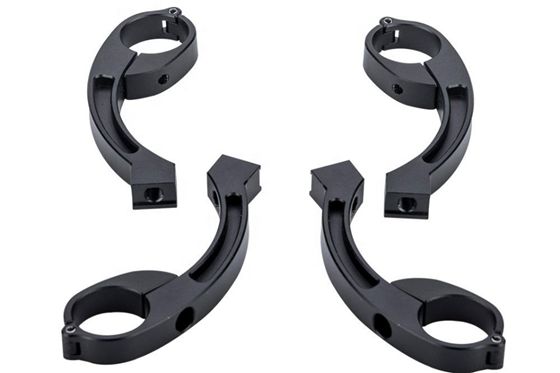
Like any other surface finishing process, various defects in black oxide coating processes tend to occur. Most of these problems have an identified cause and solutions. We’ve highlighted some common defects encountered in black oxide finishing alongside their solutions below:
Grey Finishes
This happens when the black oxide finish comes out with a grey tint instead of the expected black color. This usually occurs when there is a fluctuation in temperature during the black oxide coating process.
Solution
To fix this, make sure the temperature of the salt baths is at a predetermined level and is constantly maintained throughout the process.
Brown Rub-offs
This is characterized by the precision machined part giving off a brown (rusty) color when rubbed on the surface. High quantities of colloidal iron in the salt bath or using higher temperatures than required are common culprits of this problem.
Solution
After noticing this problem, make sure to replace the salt baths used and ensure the temperature of the salt bath remains at the predetermined level. This should completely fix the problem.
Black Oxide Finish Discontinuities
This occurs when the black oxide coating does not cover various patches of the finished part. This is commonly caused by impurities on the surface of the metal part.
Solution
To solve this, you’ll need to run the part through the cleansing process again. After
cleaning the part appropriately, you can re-run the black oxide coating process.
Performance Tests for Black Oxide Finish
Various performance tests can serve as a measure of the success of a black oxide coating exercise. However, these tests would increase the production time of the precision parts and incur additional costs. Listed below are two of the popular performance tests for the black oxide finish:
Smut Test
This process is a physical test accessing how well the finish stays on the metal surface. It also helps to check for the presence of any black residue on the metal surface. The machinists imply rubs his hand on the surface of the metal before applying the after-finish. If the finish rubs off, then there is a problem with the black oxide coating process. If not, the process is considered a success.
Relative Humidity Test
This is a test of the corrosion resistance of the black oxide part. The test examines the water resistance of the black oxide part when used in 100% relative humidity.
Pros and Cons of Black Oxide Finish
Just like most other finishes, black oxide has properties that make it such a great finish in various applications. However, it could also be lacking in a few areas. Listed below are some of the pros and cons of the black oxide finish.
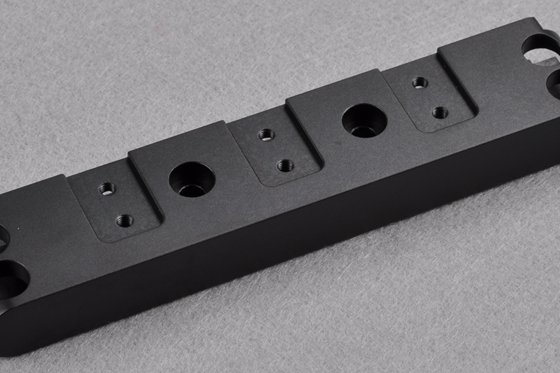
Pros
- The advantages of using the black oxide finish include:
- This finish is one of the cheapest surface finishes available in precision machining. Compared to other processes like electroplating, it is much more affordable.
- It only adds a minute extension to the part’s dimensions which is a huge plus. This makes black oxide a suitable finish for materials to be used in precision applications.
- The versatility of the finish also makes parts covered with it have applications in various industries.
- The after-finish provides lubricating properties, making the connection of the finished parts to mating parts easier.
- Finally, you can still paint the black oxide surface, giving you an even better aesthetic look.
Cons
Some disadvantages of using the black oxide coating process include:
- The continuous use of black oxide parts in hot locations could lead to the finish wearing off easily and causing rust.
- Compared to other finishes, the black oxide finish is a weak type of finish.
Choosing Black Oxide Finish for Your Precision Machined Parts
Using surface finishes on precision machined parts is a vital way of enhancing the quality of these parts. One of the various choices available in the black oxide finish, this finish is popular for its affordable cost of application and wide versatility of applications. While the finish is excellent for machined parts, getting it done right depends on expertise in the machining field.
At WayKen, we have the expertise required for different types of surface finishing processes, including anodizing, plating, polishing, painting, sanding, etc. Apart from surface finishing, we could handle your precision machining processes right from scratch to the end. We have experts in various types of rapid prototyping services ranging from CNC machining to 3D printing.
You can reach out to us to get a quote, and we’ll respond within the next 12 business hours.
FAQ
Which type of black oxide coating is the best?
The hot temperature black oxide coating is the best. It gives the best finish, although it causes the release of caustic fumes during the procedure.
Is black oxide harmful?
Yes, the hot black oxide coating process could be dangerous due to the high temperature used and the caustic fumes released.
What materials are commonly used for black oxide treatment?
Examples of materials commonly used in the black oxide treatment include the caustic soda and nitrate baths, the acid bath, the alkaline rinsing solution, and the after-finish.
Does black oxide increase the dimension of parts?
Yes, it does, but it is by an extremely minimal proportion. The range of increase is usually between 5 – 10 millionths of an inch.

